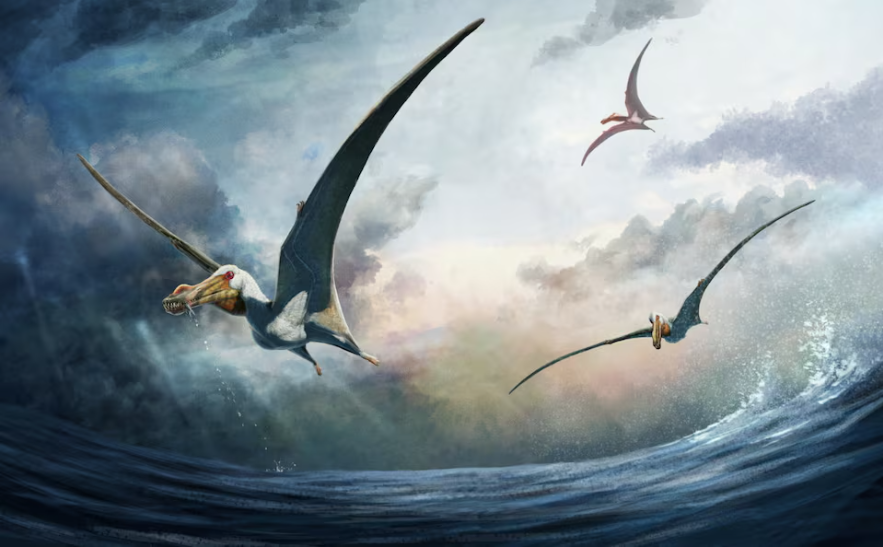
©Curtin University/Gabriel Ugueto/Handout via REUTERS
Pre-reading questions:
- Are you interested in learning about ancient or prehistoric times? Why or why not?
- What aspects of ancient history or prehistoric life intrigue you the most?
Vocabulary:
- fossil /FOS-uhl/
- eerie /EER-ee/
- vanished /VA-nuhsht/
- unearthed /un-ERTHD/
- prey /prey/
[noun] – the remains or impressions of a prehistoric organism preserved in petrified form or as a mold or cast in rock
The museum displayed a fossil of a prehistoric fish, perfectly preserved in sedimentary rock.
[adjective] – strange in a frightening and mysterious way
The abandoned house had an eerie atmosphere, with creaking floorboards and flickering shadows.
[adjective] – no longer existing; disappeared
The vanished civilizations left behind only ruins and legends.
[adjective] – something that has been uncovered, discovered, or revealed through excavation or digging
The archaeologists were excited about the unearthed artifacts, which provided new insights into ancient civilization.
[noun] – an animal that is hunted and killed for food by another animal
The lioness stalked her prey silently through the tall grass.
Article reading:
Pentland highlights the sea and traces of Haliskia that can still be seen in unearthed fossils. Despite pterosaur skeletons being fragile, Haliskia’s remains—including its lower jaws, throat bones, 43 teeth, backbone, ribs, wing bones, and part of a leg—were very well-preserved. This gives us new insights into the body and habits of these old animals. Pentland also noted the excellent condition of the throat bones, suggesting Haliskia might have had a strong tongue that helped it catch live prey like fish and squid. Haliskia became a fossil because sediment covered it on the bottom of the Eromanga Sea, which kept it in good condition. The name Haliskia comes from Kevin Petersen, who was an avocado farmer but later became a museum curator and found the fossil in 2021.
Comprehension questions
- Where was Haliskia peterseni recently found?
- What is Haliskia’s wingspan?
- Why is Haliskia called “sea phantom”?
- Why were Haliskia’s remains well-preserved despite pterosaur skeletons being fragile?
- What did Pentland suggest about Haliskia’s throat bones?
Discussion questions
- Have you ever visited a museum or exhibition featuring fossils or ancient artifacts? If so, what did you find most fascinating about the experience? If not, what type of fossil or artifact would you be most excited to see?
- If you visited a museum displaying pterosaur fossils, what specific aspects would you be most interested in learning about?
- Do you think learning about ancient creatures like Haliskia through fossils can help us understand more about the history of our planet?
- How could finding Haliskia’s fossils affect future paleontology in Australia and worldwide?
- What difficulties do scientists encounter when trying to accurately recreate how these ancient flying reptiles looked and behaved, given how fragile their skeletons are?